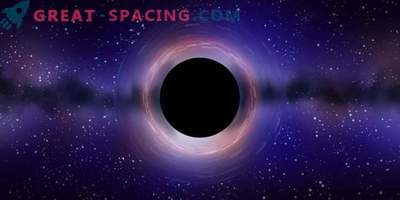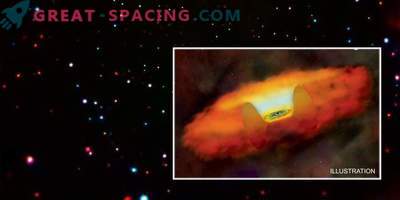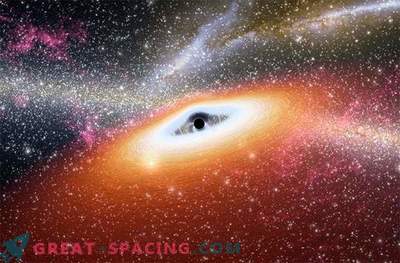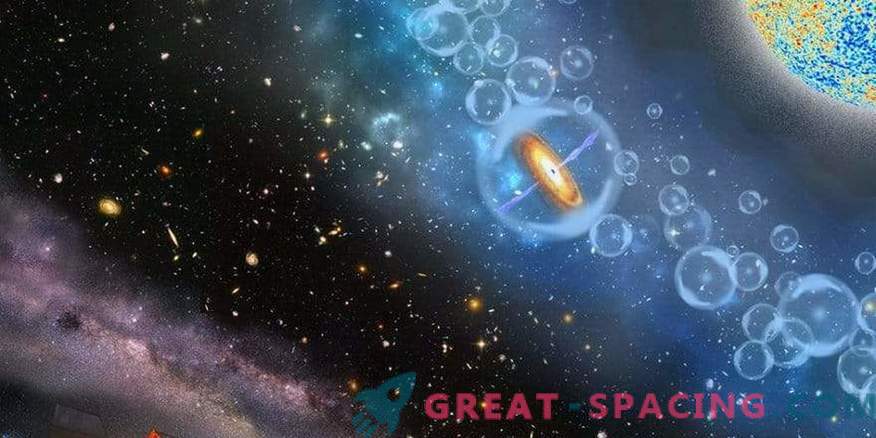
An artistic interpretation of the most distant supermassive black hole, a protruding part of a quasar created 690 million years after the Big Bang. Neutral hydrogen accumulates around, hinting at the epoch of reionization
Researchers at the Massachusetts Institute of Technology have fixed the most distant supermassive black hole. It is located inside the ultra-bright quasar, whose light came only 690 million years after the Big Bang event. Sveta had to spend 13 billion years to get to us.
In terms of massiveness, a black hole surpasses the solar one 800 million times. And this is surprising, because no one expected to meet such a massive object in such a young universe. Adds intrigue also the environment in which the object is located. Most likely, the black hole was formed in the same way as the Universe, which has undergone a fundamental shift from an opaque medium to the blinking of the first stars. As stars and galaxies were created, they generated enough radiation to transfer hydrogen from a neutral to an ionized state. This transition reflects a fundamental change in space that still exists today. Scientists believe that a black hole began to exist between neutral and ionized states (50/50).
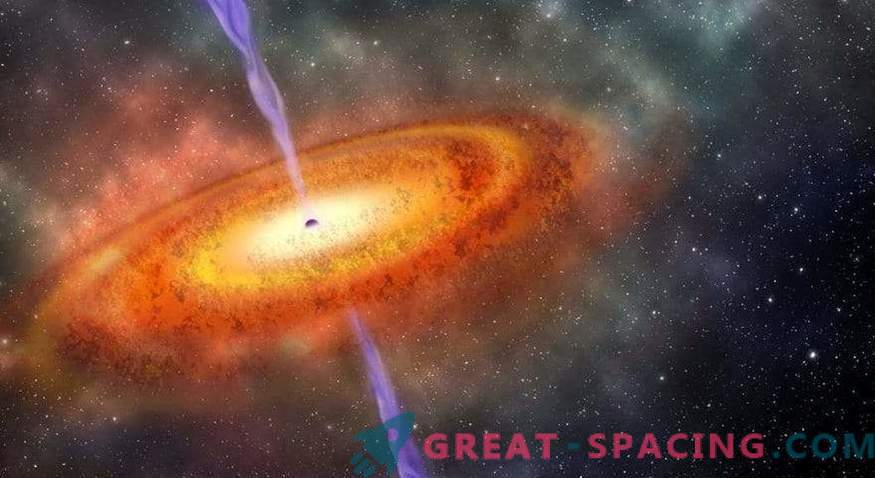
The most distant supermassive black hole, a protruding part of a quasar that appeared 690 million years after the Big Bang
High Speed Shift
Eduardo Barsados spotted the black hole. He considered quasars - one of the brightest features. The FIRE tool on the Magellan 6.5-meter telescope helped improve visibility. FIRE is a spectrometer that classifies objects based on their IR spectra. For one object, the redshift reached 7.5, that is, radiation after 690 million years after the beginning of everything.
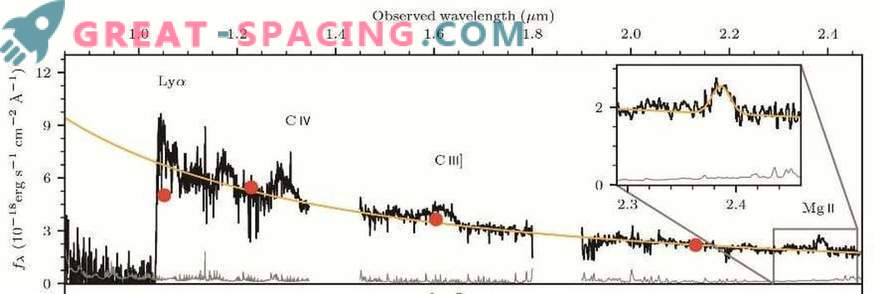
Data from FIRE (Magellan) and GNIRS (Gemini) of the IR spectrum of quasar J1342 + 0928. The inset displays the MgII line, which played a major role in determining the massiveness of a black hole.
Glow first stars
It is believed that the quasar found marks one of the most important moments in universal history. After the Big Bang, the space seemed like a hot, hot soup of energetic particles. As they expanded, they cooled and merged into neutral hydrogen gas during dark ages. As a result, the gravitational condensed matter descended into the first stars and galaxies that created the light. There is an important assumption that a specific quasar existed precisely in an era of fundamental transition.
FIRE helped to determine that most of the hydrogen around the quasar is neutral. This led to the assumption that the stars should have burned about 690 million years after the Big Bang event.
But here a new mystery arises: how did such a massive black hole manage to appear so early? It is believed that they grow due to mass absorption. But it would take much longer to achieve such a scale. So now scientists are trying to deal with this issue.



